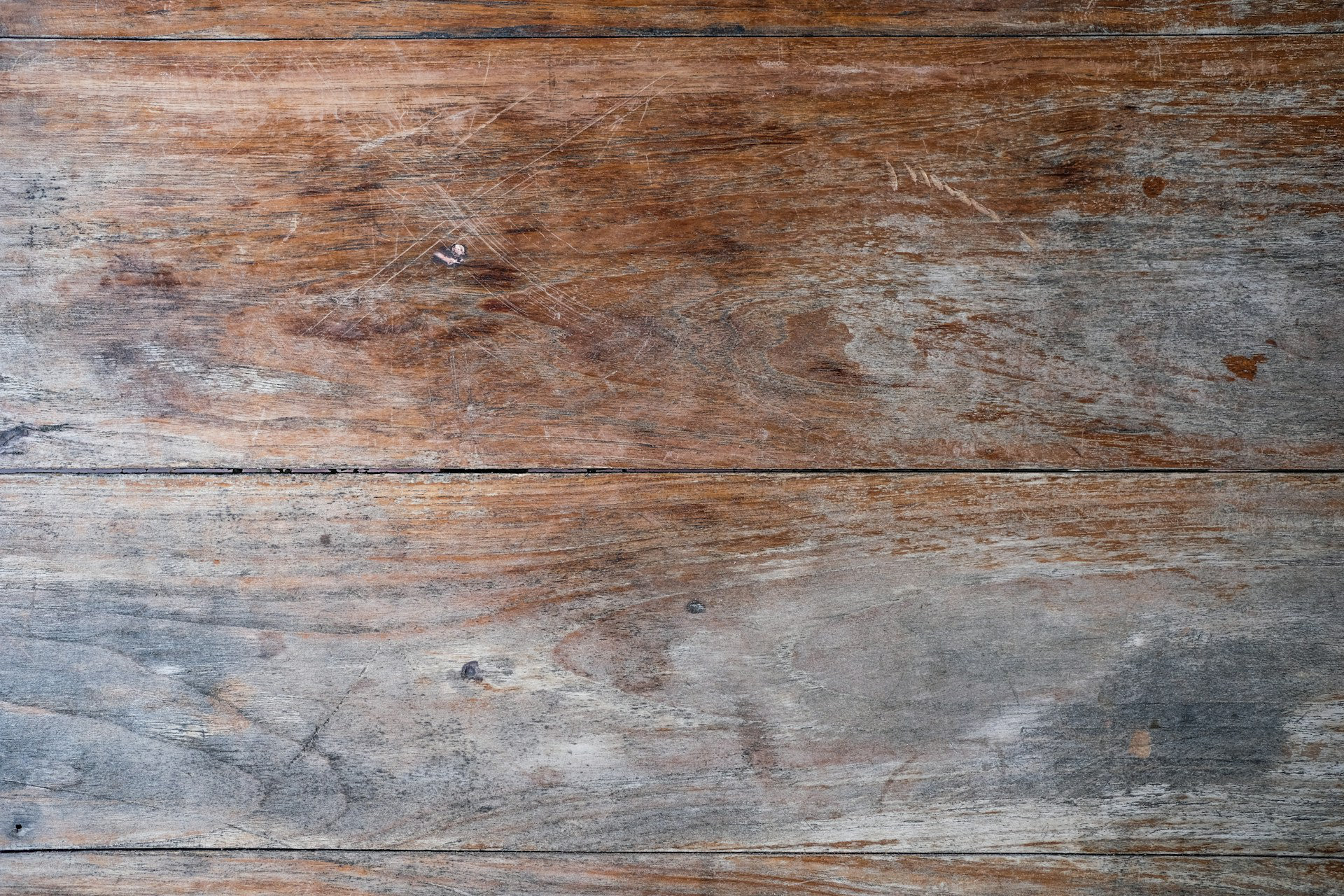We know how much you cherish your beautiful timber floors. They add warmth and elegance to your living spaces, and they’ve seen it all—from kids’ playdates to family gatherings and furry friend frolics.
But sometimes, life happens, and those gorgeous floors might suffer slight wear and tear through to damage, scratches, and scuffs. The good news is, not all is lost! Timber flooring can often be repaired; we’re here to tell you when and how.
Why Timber Floors Get Damaged
Before getting into the specifics of repairing your timber floors, it’s essential to explore the reasons behind their visible signs of damage. Many factors can affect their appearance and structure, highlighting the need for proactive care to maintain their elegance and durability. Here’s a closer look:
- Scratches and Scuffs: High heels, pet claws, and moving furniture can leave unsightly scratches and scuffs on your timber floors.
- Water Damage: Accidental spills, leaks, or humidity changes can cause timber to warp or become discoloured.
- Gaps and Creaks: Over time, timber floors may develop gaps or creaks as they settle.
- Dents and Dings: Dropping heavy objects or moving furniture without protective padding can result in dents and dings.
- Fading: Continuous exposure to sunlight can cause your timber floors to lose their original colour.
Types of Timber Floors That Can Be Repaired
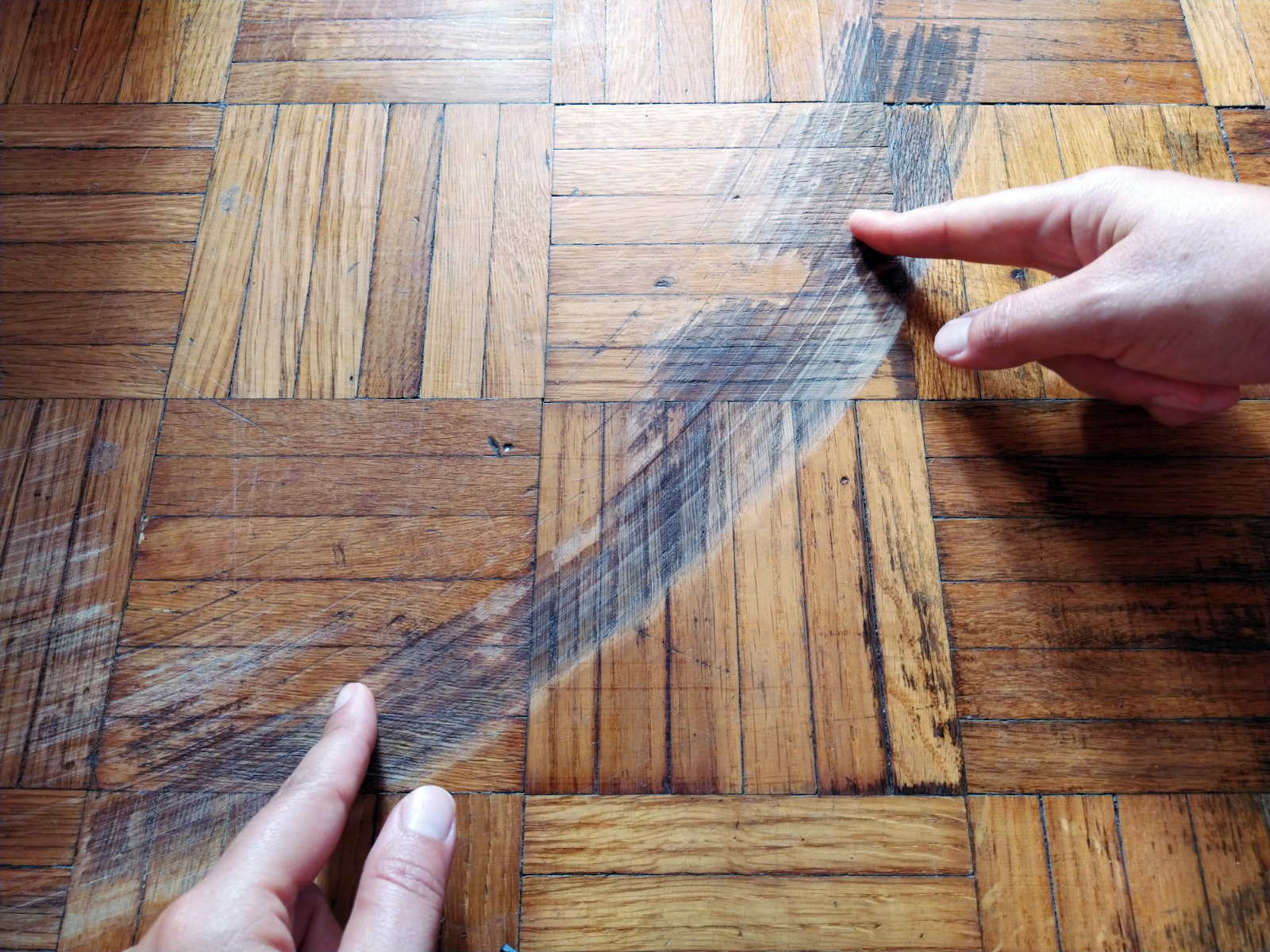
The good news is that not all damage to your cherished timber floors signals an irreversible catastrophe requiring complete replacement. With timely intervention and the right repair techniques, many issues can be effectively addressed, restoring their warmth and elegance.
The feasibility of repairs hinges on several critical factors, including the severity and depth of the damage, the specific species of timber used, and the construction of your flooring system.
All of this determines whether simple touch-ups or more extensive restoration processes are necessary to revive your floors’ original beauty. Here’s a detailed breakdown:
- Surface Damage: If your timber floors have superficial issues like light scratches, minor scuffs, or faded spots, they can typically be repaired. These are often fixed through sanding and refinishing, which can breathe new life into your floors, making them look as good as new.
- Deeper Damage: For more substantial issues like dents, dings, or localised water damage, repair is usually possible by replacing damaged boards. Timber floors are designed to be replaceable, so this can often be done without replacing the entire floor.
- Warping and Buckling: If your timber floors have warped or developed gaps due to water damage, they might still be salvageable. In some cases, boards can be dried, reinstalled, and refinished. However, severe warping may require more extensive repairs or replacement.
- Structural Issues: When it comes to severe structural issues, such as extensive rot or widespread water damage, consider replacing the entire floor. More than repairs might be required to address such significant problems.
Fixing Damaged Floorboards
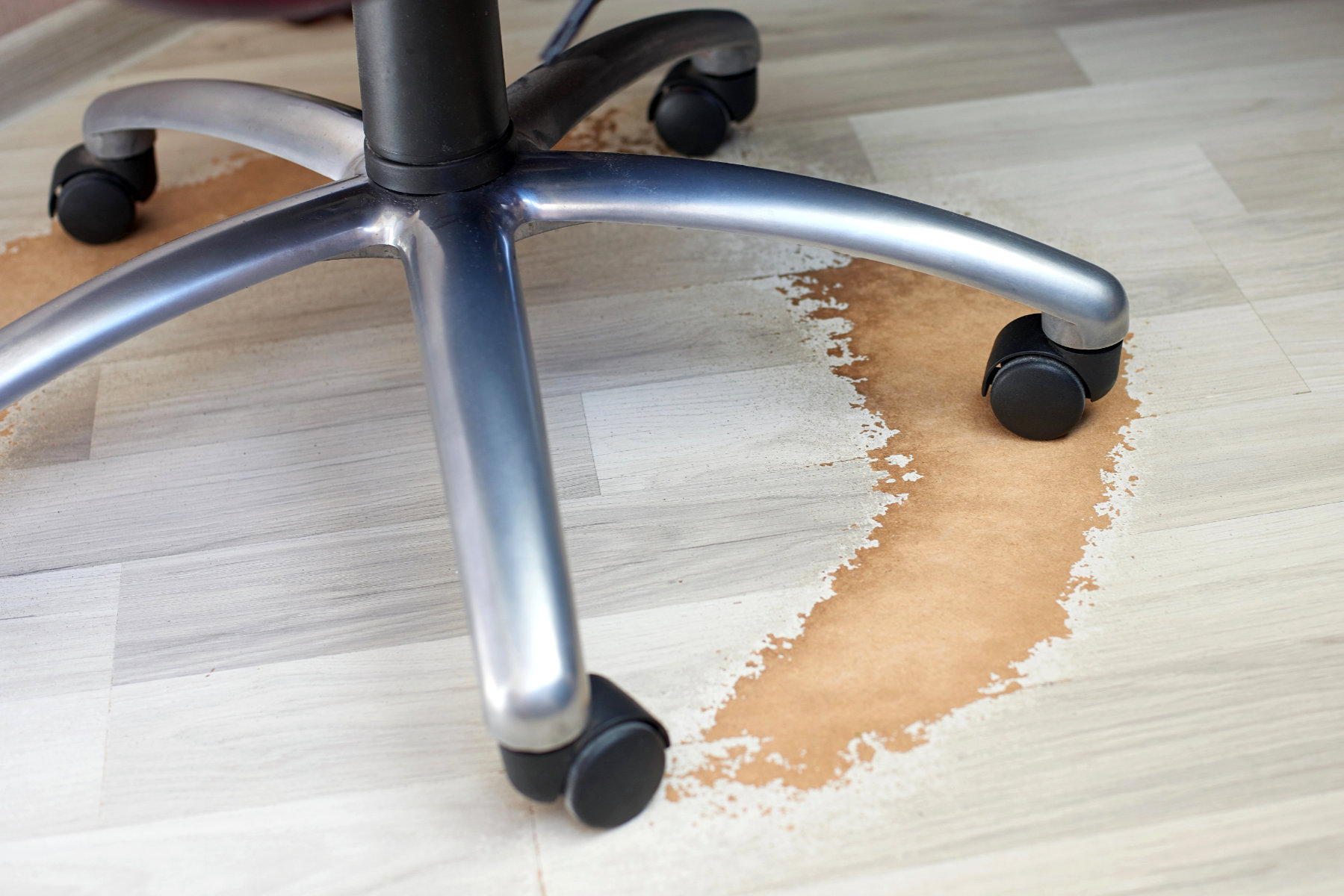
Repairing damaged timber floorboards is often straightforward and can restore your floors to their former glory. With the right tools and techniques, you can address a range of issues, from minor scratches to more significant damage like dents or warping. Acting promptly and choosing the appropriate repair method will ensure your floors continue to enhance your home’s aesthetic for years to come.
This guide provides a comprehensive approach to fixing damaged floorboards, suitable for both DIY enthusiasts and those considering professional help. By following these steps, you can tackle common problems effectively, preserve the natural beauty of your timber floors, and prevent further deterioration.
Assess the Damage
Start by inspecting the floorboards to determine the extent of the damage. Identify whether it’s surface-level (scratches, scuffs) or deeper (dents, warping, or water damage).
A thorough assessment helps you decide whether a simple polish will suffice or if more intensive repairs, like board replacement, are necessary. Walk across the affected area and look for visible signs of wear, such as discoloration or uneven surfaces.
Use a flashlight to highlight subtle scratches or cracks, and check for creaking sounds that might indicate loose boards. Documenting the damage can help you plan your repair strategy and gather the right materials.
Clean the Area
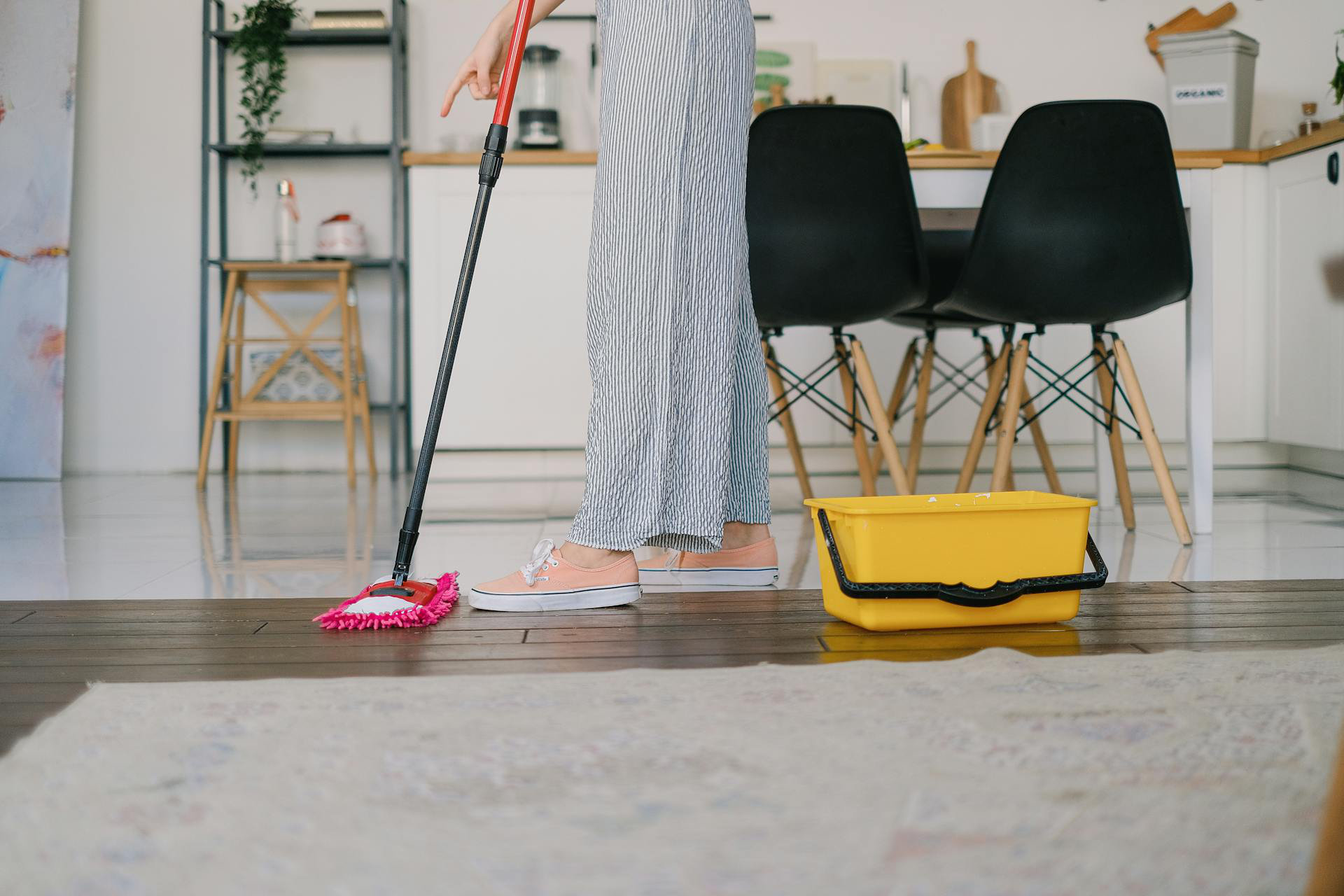
Clear the damaged area of dirt, dust, or debris to ensure a smooth repair process. Use a mild cleaner specifically designed for timber floors and a soft cloth to gently clean the surface without causing additional scratches. A clean surface allows repair products to adhere properly and ensures a seamless finish.
Avoid using excessive water or harsh chemicals, as these can worsen damage or strip the floor’s finish. After cleaning, dry the area thoroughly with a microfiber cloth to prevent moisture-related issues.
This step is critical for preparing the floorboards for sanding, polishing, or board replacement.
Fix Surface Scratches and Scuffs
For light scratches, apply a timber floor polish or a touch-up marker that matches your floor’s color to conceal minor imperfections. These products are easy to use and can blend seamlessly with the surrounding wood, restoring the floor’s appearance without extensive work.
For slightly deeper scratches, lightly sand the area with fine-grit sandpaper (240-grit) to smooth the surface. After sanding, apply a thin layer of polyurethane or a matching finish to seal the area and protect it from further damage.
Ensure the finish is applied evenly to avoid noticeable patches, and allow it to dry completely before walking on the floor.
Repair Dents and Dings
For shallow dents, use a damp cloth and a hot iron to steam the wood, encouraging it to swell back into shape. Place the cloth over the dent, apply the iron for a few seconds, and repeat until the dent rises. Once the dent is minimized, sand lightly and refinish to match the surrounding floor.
For deeper dents that cannot be steamed out, replacing the damaged board may be necessary (see Replace Damaged Boards). This method ensures a consistent look and prevents further deterioration. Always test the steaming technique on a small, inconspicuous area first to avoid damaging the finish.
Replace Damaged Boards
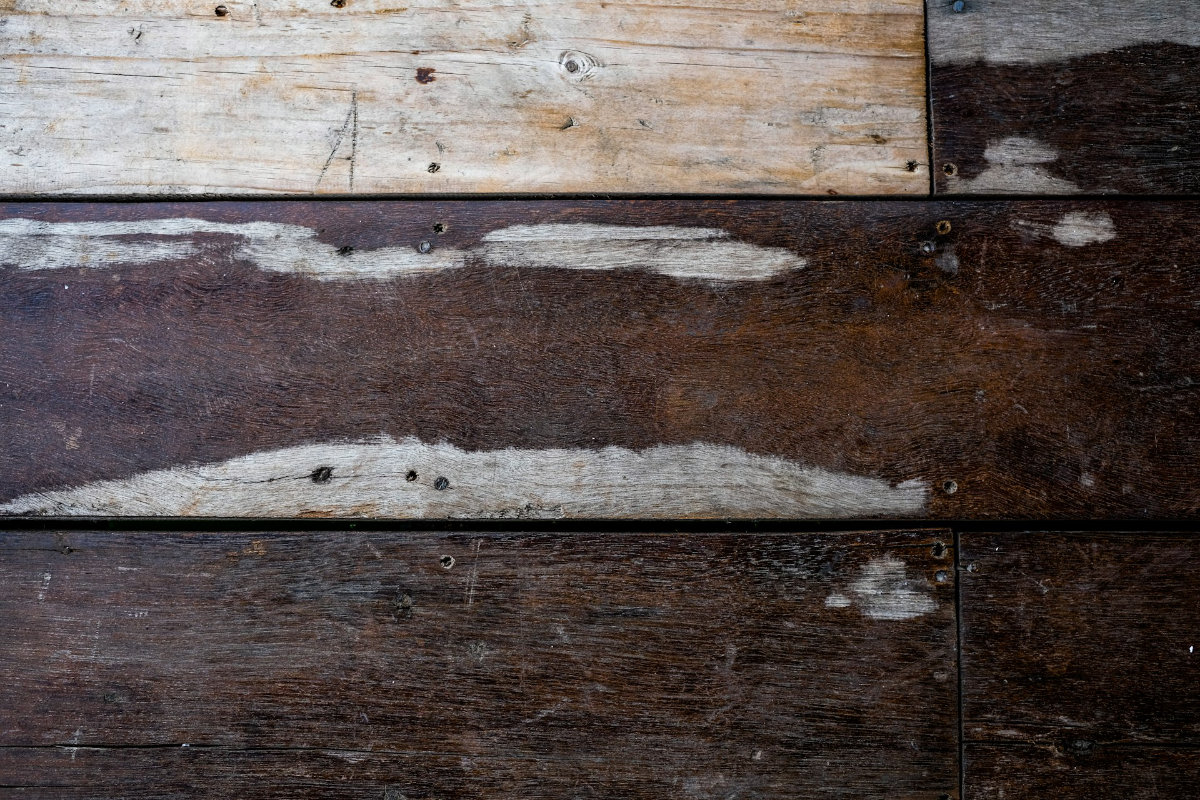
Carefully remove the damaged board using a chisel and pry bar, taking care not to harm surrounding boards. Work slowly to lift the board, cutting it into smaller pieces if necessary to simplify removal. Clean the subfloor beneath to ensure a stable base for the new board.
Source a replacement board that matches your floor’s species, color, and grain, and cut it to size if needed. Secure the new board with adhesive or nails, ensuring it sits flush with the surrounding floor.
Sand and refinish the area to blend it seamlessly with the rest of the floor, creating a cohesive look.
Address Water Damage
For minor water stains, buff the area with a soft cloth and a mild cleaner to remove discoloration.
If the stain persists, apply a timber floor restorer or a specialized wood bleach to lighten the affected area. These products can effectively restore the wood’s original color without compromising its integrity.
For warped boards caused by prolonged water exposure, use a dehumidifier to remove excess moisture from the room and encourage the wood to dry. Once stabilized, sand and refinish the boards to restore their appearance.
Severely warped boards that cannot be flattened may need replacement to maintain a uniform floor surface.
Sand and Refinish
For widespread surface damage, consider sanding the entire floor to remove imperfections and create a uniform surface.
Use a professional-grade sander, starting with coarse sandpaper (80-grit) and progressing to finer grits (120-240-grit) for a smooth finish. Sanding requires patience to avoid uneven patches or over-sanding.
Apply a new coat of finish, such as polyurethane, oil, or wax, to protect the wood and restore its shine. Choose a finish that matches your floor’s original look, and apply it in thin, even coats, allowing each layer to dry fully.
This step not only enhances the floor’s appearance but also adds a protective barrier against future damage.
Prevent Future Damage
Use felt pads under furniture legs, avoid wearing high heels indoors, and clean spills immediately to minimize wear and tear. These simple habits can significantly extend the life of your timber floors and reduce the need for frequent repairs. Regularly inspect your floors for early signs of damage to address issues promptly.
Maintain consistent humidity levels (40-60%) using a humidifier or dehumidifier to prevent warping or cracking due to environmental changes. Schedule regular professional maintenance, such as cleaning or refinishing, to keep your floors in top condition and preserve their beauty for years to come.
How Extensive Can Repairs Go?
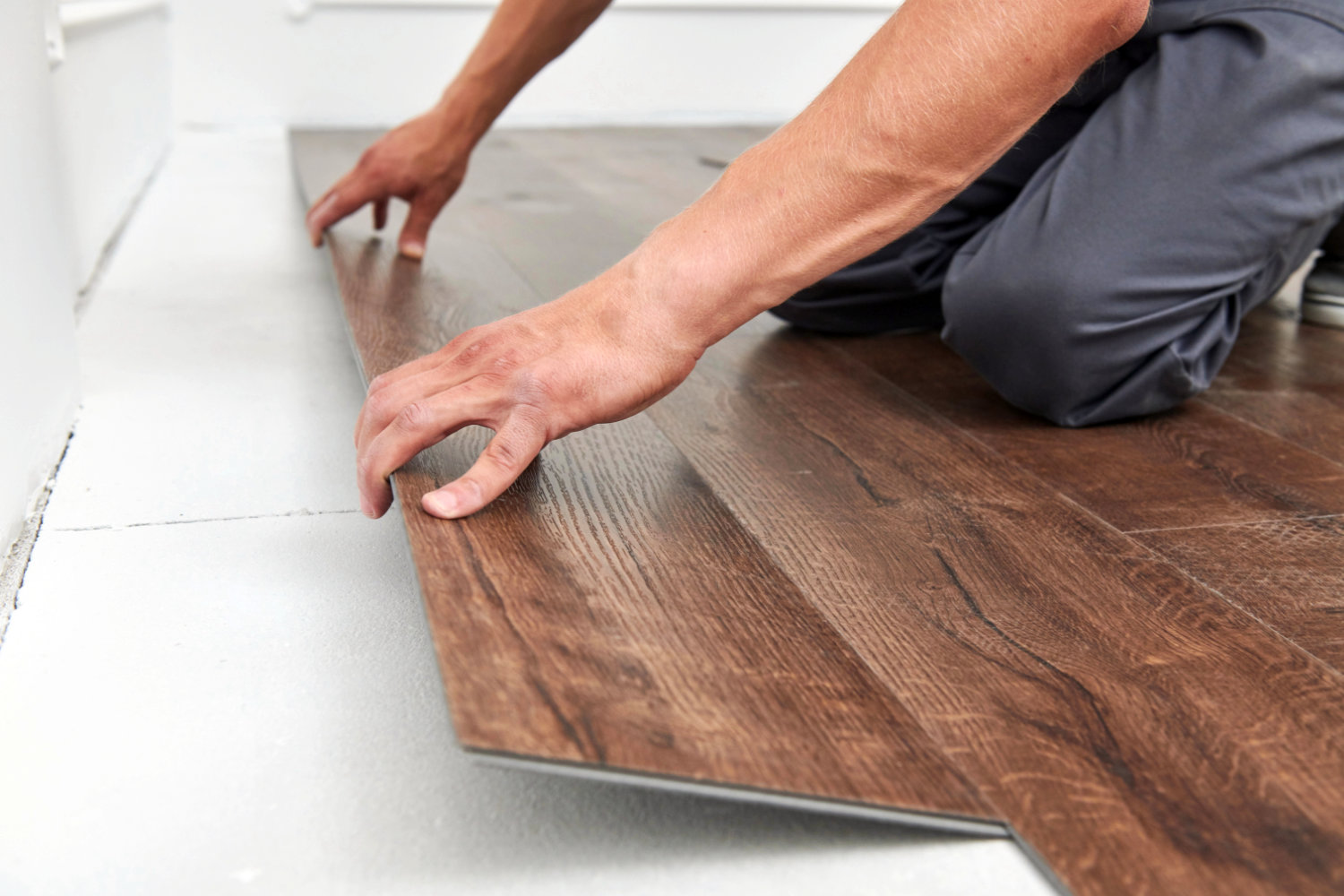
While timber floors can withstand a lot, they’re not invincible. But the good news is that many types of damage can be repaired, and your floors can continue to shine and add character to your home. The extent to which timber floor repairs can bring your floors back to life depends on several factors:
- The Type of Timber: Different timber species have varying levels of durability and repairability. Hardwoods like oak and maple tend to hold up well to repair, while softer timbers may be more challenging.
- The Severity of Damage: As mentioned earlier, minor scratches and surface imperfections are usually easy to fix. However, repairs may be limited if the damage is extensive or structural.
- Expertise of the Repair Team: Hiring experienced professionals can make a difference. A skilled team can assess the damage accurately and recommend the most effective repair method.
The key is to act promptly when you notice issues and to consult with experts who can guide you on the best course of action. Remember, maintaining your timber floors through regular cleaning and care can also help prevent damage in the first place.
Whether you have minor scuffs or more significant issues, Abacus Flooring is here to provide the professional advice and services you need to keep your timber floors looking their best. So, don’t fret if your floors have seen better days—they might need a little TLC to be back in top shape!
When to Call a Professional
If the damage to your timber floors is extensive, involves complex structural issues, or you’re uncertain about the repair process, it’s wise to consult a professional flooring expert. Their expertise ensures precise repairs, seamless finishes, and long-lasting results that preserve your floors’ natural beauty.
By addressing damage promptly and following these steps, your timber floorboards can regain their stunning appearance and durability, enhancing your home’s charm for years to come. Ready to restore the timeless elegance of your timber flooring?
For expert guidance and top-tier repair services, contact Abacus Flooring in Sydney, Northern Beaches, and North Shore today. Let’s keep your floors looking spectacular!


